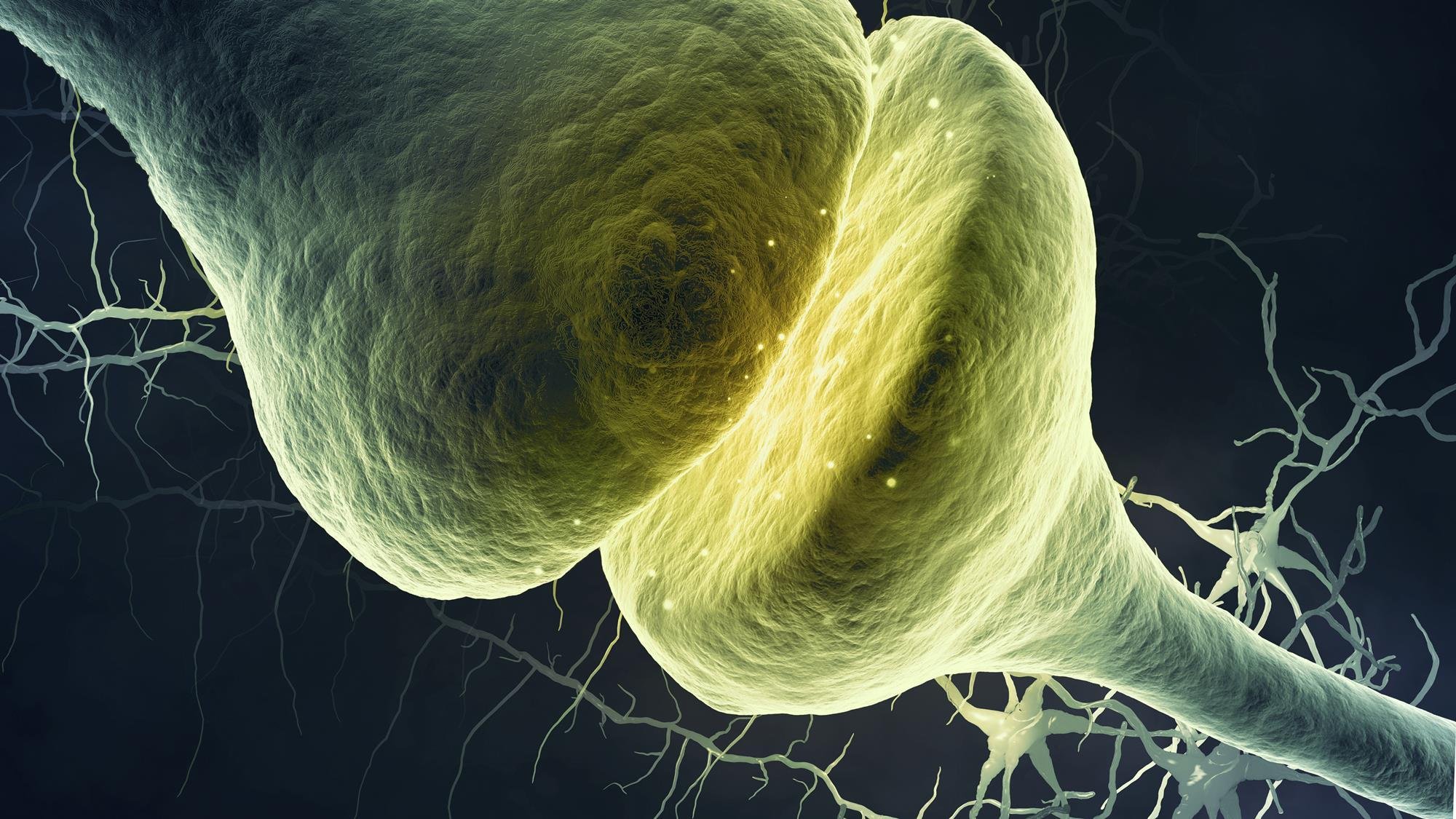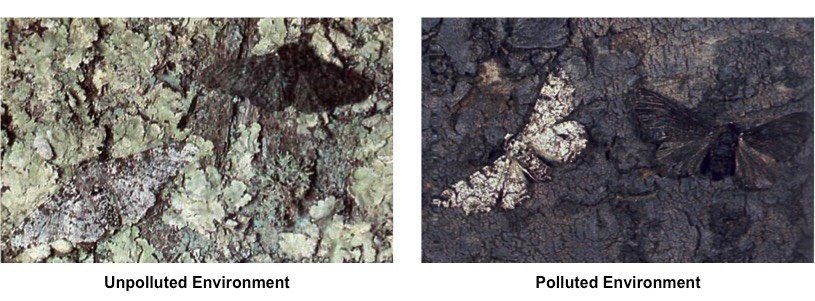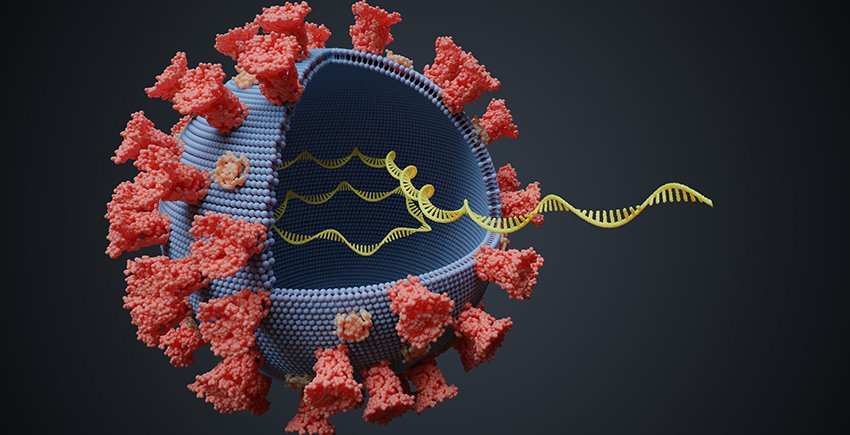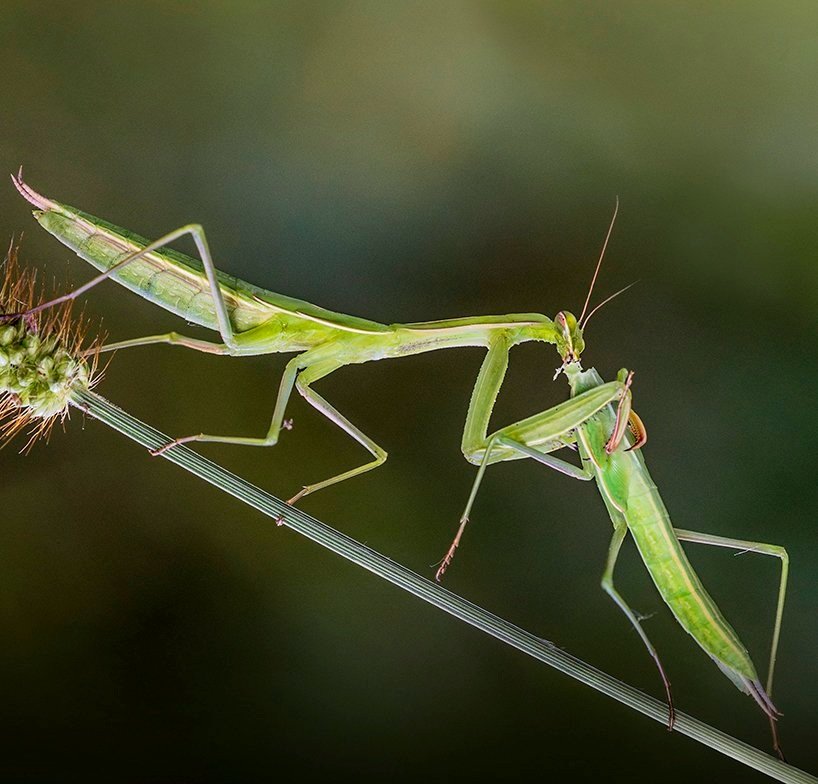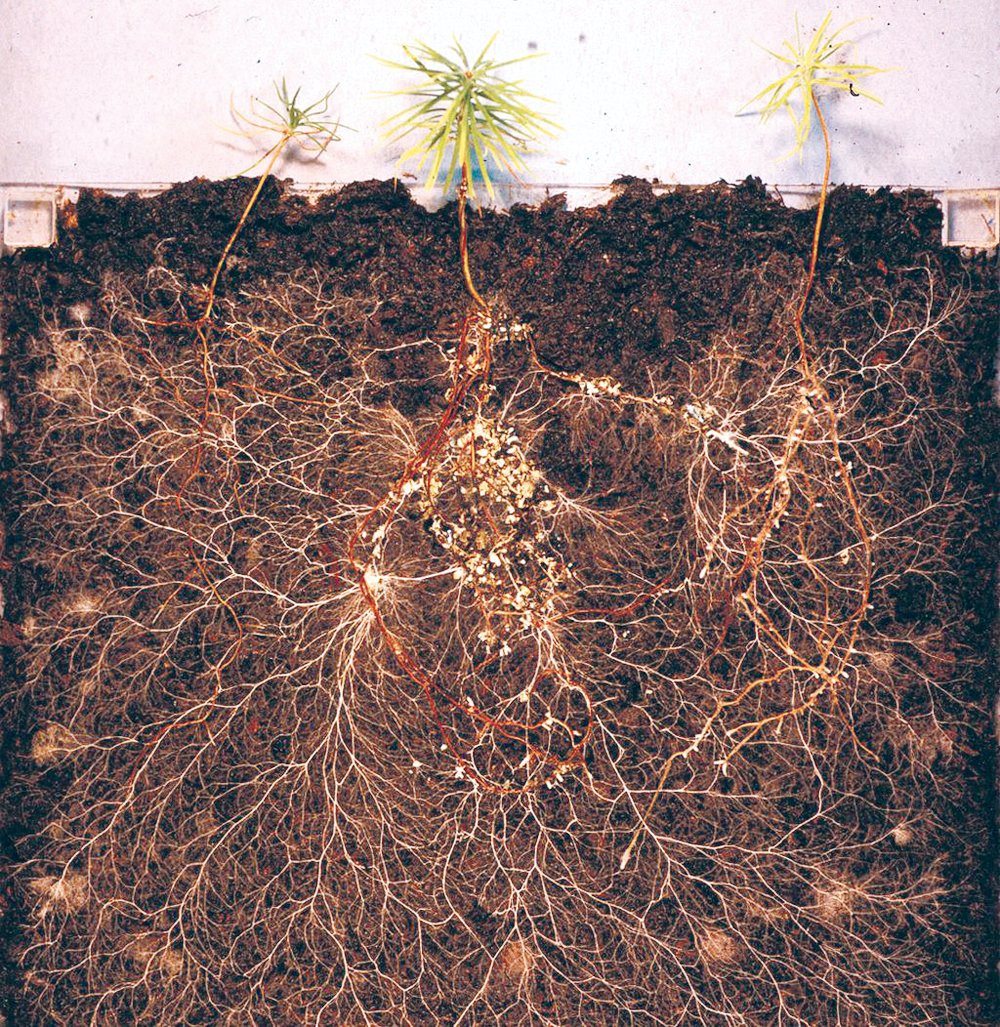KNOWLEDGE AND THE KNOWER—
WHAT COUNTS AS KNOWLEDGE?
MEMES AND OTHER FICTIONS
Synapse visualization from Andy Extance (2018) Thinking Proteins Royal Society of Chemistry.
Image source: Andrzej Wojcicki/ Science Photo
“MEME”—A NEW KIND OF REPLICATOR!
Atheist and evolutionary biologist Richard Dawkins introduced the idea of "memes" in The Selfish Gene—the 1976 book that gave him fame as a public intellectual. Richard Dawkins is featured in the Knowledge and religion optional theme. His provocative evocation of the viral God meme can be found at the very persistent meme page. A short video encapsulating his perspective on faith and the scientific endeavor is embedded in an encounter with radical atheism.
Invite students to read and assimilate the Dawkins “meme” and the Harari “useful fictions” quotations below. Project the Harari graphic video and acknowledge the self-referential irony of the Dawkins internet meme! Then briskly move on to the hands-on Understanding Natural Selection activity.
“I think that a new kind of replicator has recently emerged. . . . It is staring us in the face. It is still in its infancy, still drifting clumsily about in its primeval soup, but already it is achieving evolutionary change at a rate which leaves the old gene panting far behind…
We need a name for the new replicator, a noun which conveys the idea of a unit of cultural transmission, or a unit of imitation. ‘Mimeme’ comes from a suitable Greek root, but I want a monosyllable that sounds a bit like ‘gene’. I hope my classicist friends will forgive me if I abbreviate mimeme to meme...
Examples of memes are tunes, ideas, catch-phrases, clothes fashions, ways of making pots or of building arches. Just as genes propagate themselves in the gene pool by leaping from body to body via sperms or eggs, so memes propagate themselves in the meme pool by leaping from brain to brain, via a process which, in the broad sense, can be called imitation.”
HARARI’S USEFUL FICTIONS
Another celebrated viewpoint on persistent cultural memes can be found in the work of Israeli historian and author, Yuval Noah Harari. Harari is a professor in the Department of History at the Hebrew University of Jerusalem and author of several bestseller popular science books. In recent years our school has assigned Sapiens: A Brief History of Humankind (2014) as summer reading for our beginning TOK students.
Yuval Harari is also featured elsewhere on this site. His cautionary speculations on AI and the future of policing, medicine, and banking can be found in Chess algorithm—AlphaZero in the Knowledge and technology optional theme. Harari’s “biology enables, culture forbids” stance appears in Democracy and informed citizenship in the Knowledge and politics core theme.
“Fiction isn’t bad. It is vital. Without commonly accepted stories about things like money, states or corporations, no complex human society can function. We can’t play football unless everyone believes in the same made-up rules, and we can’t enjoy the benefits of markets and courts without similar make-believe stories. But stories are just tools. They shouldn’t become our goals or our yardsticks. When we forget that they are mere fiction, we lose touch with reality. Then we begin entire wars `to make a lot of money for the corporation’ or ‘to protect the national interest’. Corporations, money and nations exist only in our imagination. We invented them to serve us; why do we find ourselves sacrificing our life in their service.”
CLASS ACTIVITY II
—UNDERSTANDING NATURAL SELECTION
Peppered moths (Biston betularia) exist in two distinct polymorphic forms – a light coloration and a darker melanic variant. In an unpolluted environment, the trees are covered by a pale-colored lichen, which provides camouflage for the lighter moth. In a polluted environment, sulphur dioxide kills the lichen while soot blackens the bark, providing camouflage for the dark moth.
Photo and caption credit: BioNinja, Australia
PLAY THE PEPPERED MOTH GAME
For a quick warm up activity students should go online and play one round of the Peppered Moth Game courtesy of Ask a Biologist at Arizona State University. Here’s how to play:
Guide the predatory bird to the moths. Click on the moth to eat it. You have one minute to eat as many as you can. See what impact eating more light or dark moths has on moth population.
Detail of an 1871 cartoon by Linley Sambourne, published in Punch magazine, depicting Charles Darwin embodied as a naked ape.
PRECONDITIONS FOR NATURAL SELECTION
Natural selection is the differential survival and reproduction of individuals due to variations in physical characteristics (phenotype). Natural selection drives evolution—changes in the heritable traits of a population over generations driven by environmental contingencies.
Natural selection hinges on:
1. Replicator mechanism—
Physical characteristics are determined by genes (genotype). Genes are encoded by DNA. Organisms must live long enough to reproduce successfully to pass genes on to the subsequent generation.
2. Variation—
Diversity within populations is driven partly by random genetic mutations
3. Competition—
More offspring are produced than can possibly survive resulting in competition for limited resources.
“This survival of the fittest... is that which Mr. Darwin has called ‘natural selection’, or the preservation of favoured races in the struggle for life.”
Instead of formally presenting these prerequisites for Natural Selection as a given; take a constructivist, maieutic approach by asking students to derive equivalent bullet points based on their previous knowledge. HL biology students may or may not lead the way.
Next, project these four biological images, previously encountered and unpacked in Instantiation—where is knowledge activity. Further consolidate understanding of natural selection, and how it might play into what counts as knowledge, by asking individual students to speculate how replicators, variation and competition have played play into the evolution and environmental fitness of the coronavirus, bacteria, mantid and underground mycorrhizal network over time.
ARTIFICIAL SELECTION
pug health issues 551 bc
“Artificial selection is the identification by humans of desirable traits in plants and animals, and the steps taken to enhance and perpetuate those traits in future generations.”
The straightforward National Geographic quotation and discombobulating pug skull may prove redundant. Consolidate the memes and selection activities by asking the following generative questions:
What is the essential difference between artificial and natural selection?
Why is artificial selection and meme selection so much faster than Darwinian natural selection? Can you think of any exceptions?
How do culturally embedded “memes” and “useful fictions” persist and evolve? To what extent do their propagation and survival align with a replicator/variation/competition model for selection?
